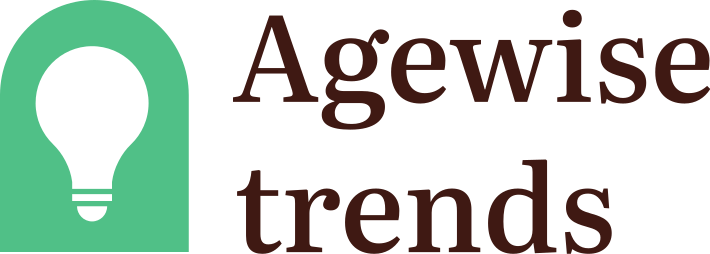The Internal Revenue Service (IRS) has announced adjustments to retirement account contribution limits for 2025. The new rules will allow workers to save more in their 401(k) plans while keeping Individual Retirement Account (IRA) limits unchanged. These changes reflect cost-of-living adjustments designed to help Americans prepare for retirement in an era where traditional pensions are becoming less common.
While the higher 401(k) contribution limit gives employees more flexibility to save for their future, the unchanged IRA cap may require savers to look at alternative strategies. Financial experts have pointed out that Roth IRA conversions, tax implications, and employer-sponsored retirement plans should be carefully considered when making retirement savings decisions.
Key Takeaways
The IRS has bumped up the 401(k) contribution limit for 2025 to $23,500 while keeping the IRA cap steady at $7,000, all in a bid to help Americans better save for retirement.
- For 2025, you can now contribute up to $23,500 to your 401(k), with extra catch-up contributions available for those 50 and older.
- IRA contribution limits are holding steady at $7,000, which might prompt savers to explore alternative strategies.
- Financial experts are recommending Roth IRA conversions and a mix of tax-deferred and tax-free accounts to better manage retirement savings.
401(k) contribution limit increases
For 2025, the IRS has raised the annual contribution limit for 401(k), 403(b), most 457 plans, and the federal government’s Thrift Savings Plan. The new limit is $23,500, up from $23,000 in 2024. This increase allows employees to set aside more pre-tax dollars for retirement, reducing their taxable income in the present while securing their future.
Workers aged 50 and older can continue to make additional “catch-up” contributions of $7,500. This means that older employees can contribute a total of $31,000 annually to their 401(k) plans, giving them an opportunity to save more as they approach retirement.
A key change under the SECURE 2.0 Act affects workers aged 60, 61, 62, and 63, who will now have a higher catch-up contribution limit of $11,250. This policy acknowledges that older employees often have more disposable income to invest in retirement as they near the end of their careers. It also provides an option for those who may not have saved enough earlier in life to boost their retirement funds significantly.
IRA contribution limits remain the same
Unlike 401(k) plans, IRA contribution limits will stay unchanged in 2025. The maximum annual contribution remains at $7,000, with an additional $1,000 catch-up contribution for individuals aged 50 and older. This means older savers can put a total of $8,000 into their IRAs for the year.
While the 401(k) limit increased slightly, some financial professionals have expressed disappointment that the IRA contribution limit did not receive an adjustment. Many individuals rely on IRAs as their primary retirement savings vehicle, particularly those who are self-employed or whose employers do not offer retirement plans. With inflation continuing to rise, a higher IRA limit would have helped savers keep pace with the cost of living.
Despite the static contribution limit, IRAs remain a useful tool for retirement planning. Traditional IRAs allow for tax-deferred growth, meaning individuals do not pay taxes on contributions or investment gains until they withdraw funds in retirement. Roth IRAs, on the other hand, allow for tax-free withdrawals in retirement, as contributions are made with after-tax dollars.
Pros and cons of Roth IRA conversions
One major financial strategy that has gained attention in recent years is the Roth IRA conversion. This involves transferring funds from a Traditional IRA to a Roth IRA, paying taxes on the converted amount upfront in exchange for tax-free withdrawals in retirement.
Financial expert Jean Chatzky has cautioned that while Roth IRA conversions can be beneficial for some people, they are not the right choice for everyone. The main factor to consider is whether the tax burden from the conversion is manageable. If someone is in a low tax bracket now but expects to be in a higher tax bracket in retirement, a Roth conversion could make sense. However, for those who would struggle to pay the taxes immediately, converting a IRA to a Roth IRA could cause financial strain.
Additionally, individuals with higher incomes may not be able to contribute directly to a Roth IRA. In 2025, single filers with incomes above $150,000 and married couples earning over $236,000 will have limited or no ability to contribute directly to a Roth IRA. In these cases, some savers use a strategy known as a “backdoor” Roth IRA, which involves contributing to a Traditional IRA and then converting it to a Roth IRA.
A Roth IRA offers the advantage of tax-free withdrawals in retirement and does not require minimum distributions, unlike a Traditional IRA. This flexibility makes it a desirable option for those who wish to leave money to heirs or avoid forced withdrawals. However, the decision to convert should not be made lightly. It is important to evaluate one’s current and future tax situation and consult a financial advisor before making a move.
Preparing for retirement in a changing economy
Retirement planning has become more complex in recent years. With traditional pensions disappearing and Social Security’s future uncertain, individuals must take greater responsibility for their retirement savings. The changes to 401(k) contribution limits reflect an effort to help workers put aside more money for the future.
However, the unchanged IRA limits suggest that policymakers may not be prioritizing individual retirement savings as much as employer-sponsored plans. This could be a disadvantage for self-employed individuals, freelancers, and those working for small businesses that do not offer 401(k) plans.
One strategy to maximize retirement savings is to take full advantage of employer-sponsored 401(k) plans, especially if the employer offers a matching contribution. Contributing enough to receive the full employer match is considered one of the best ways to grow retirement savings quickly.
For those without access to a 401(k), opening and regularly contributing to an IRA is essential. Even though the contribution limit is lower, consistent investing over time can lead to significant growth.
Another consideration is diversification. Many financial experts recommend holding a mix of tax-deferred accounts (like Traditional IRAs and 401(k)s) and tax-free accounts (like Roth IRAs) to provide flexibility in retirement. Having both types of accounts allows retirees to manage their taxable income more efficiently when they begin withdrawing funds.
Additionally, people should periodically review their retirement plans, especially when the IRS adjusts contribution limits or when their financial situation changes. Life events such as marriage, having children, receiving an inheritance, or changing jobs can all impact retirement planning decisions.
How inflation affects retirement savings
Inflation reduces the purchasing power of money, making it a major challenge for retirement planning. While the 401(k) contribution limit increased for 2025, IRA limits remain unchanged, which may not be enough to keep pace with rising living costs.
Key expenses like housing, healthcare, and daily necessities tend to increase over time, with healthcare costs often outpacing inflation. To protect retirement savings, experts suggest investing in assets that grow faster than inflation, such as stocks, real estate, and inflation-protected securities.
Delaying Social Security benefits can also help, as waiting beyond full retirement age increases monthly payments. A well-planned strategy that accounts for inflation ensures retirees maintain their lifestyle despite economic changes.
IRS raises 401(k) limits, IRA caps unchanged
The IRS’s decision to increase 401(k) contribution limits while keeping IRA limits unchanged will affect how workers save for retirement in 2025. The ability to contribute more to 401(k) plans is a positive development for employees, particularly those who can take advantage of catch-up contributions. However, individuals relying on IRAs may need to explore other savings strategies to make up for the lack of an increase.
As the retirement landscape continues to evolve, it is more important than ever to stay informed about contribution limits, tax implications, and financial strategies. Consulting a financial advisor and developing a comprehensive retirement plan can help individuals make the most of their savings and ensure a secure financial future.














